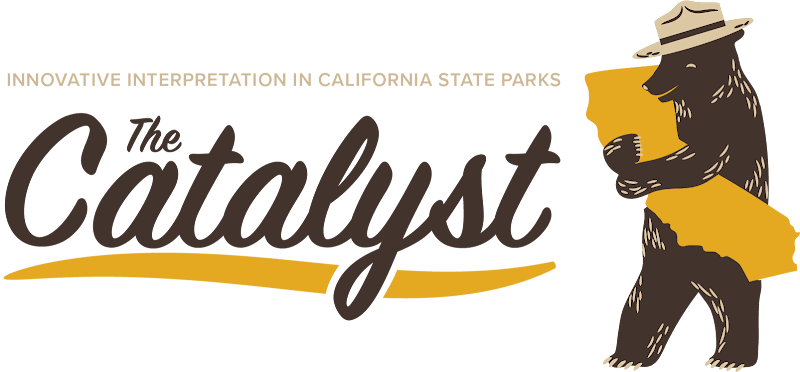
Collaboration is Making Things Happen at Pescadero Marsh Natural Preserve!
Natural resource agencies, California voters, legal cannabis users, and even steelhead trout, are all collaborating to fulfill California State Park’s mission in an exciting restoration project in the San Mateo Coast Sector of Santa Cruz District State Parks. With funding from the Cannabis Watershed Protection Program (CWPP), California State Parks, partnering with the San Mateo Resource Conservation District, is involved in an ecological restoration and climate resiliency project within the Pescadero Marsh Natural Preserve.
To put this into context: in 2016, Californians voted to legalize recreational cannabis with the passage of Proposition 64. Specifically, the intent of the act, among other actions, is to “…generate hundreds of millions of dollars in new state revenue annually for restoring and repairing the environment.” When someone makes a purchase at a legal cannabis dispensary, some of the tax money generated from this purchase will make its way to State Parks for the purposes mentioned above. Interpretation, accessibility, and public safety are all included in this funding framework.
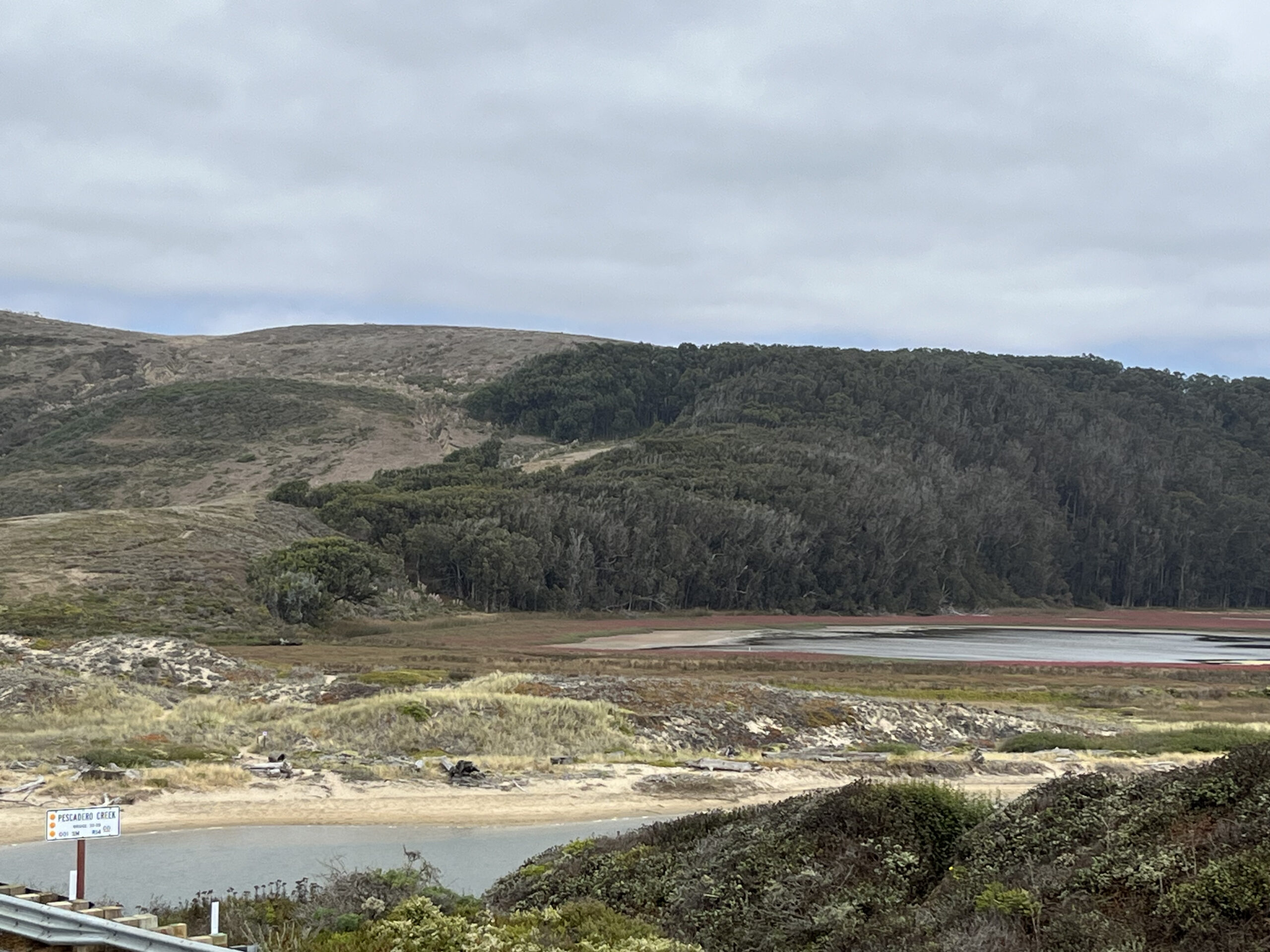
Seeking to right the environmental wrongs of the past, the over-arching goal of the Pescadero Marsh project is to restore the natural ecological processes that have been disrupted in this watershed by generations of human impact. Since the late 1800’s, the landscapes and waterways of the Pescadero Creek watershed have been changed by the building of roads, ditches, and levees generally for agricultural purposes, including illegal cannabis cultivation, all negatively impacting this watershed.
This project is a ‘de-development’ of sorts, with strategic levee and culvert eradications to encourage the marsh’s natural flow of water that affects all life forms depending upon this watershed’s health for their survival. This Pescadero Marsh restoration project aims to improve overall marsh and lagoon processes and increase system resilience to continued upstream impacts, sea level rise, and climate change. My role as the Central California Watershed Program Coordinator is to add interpretive capacity to the project and serve as the project coordinator for a suite of trail enhancements including the development of new interpretive panels, video projects, and future guided walks once the restoration work is complete.
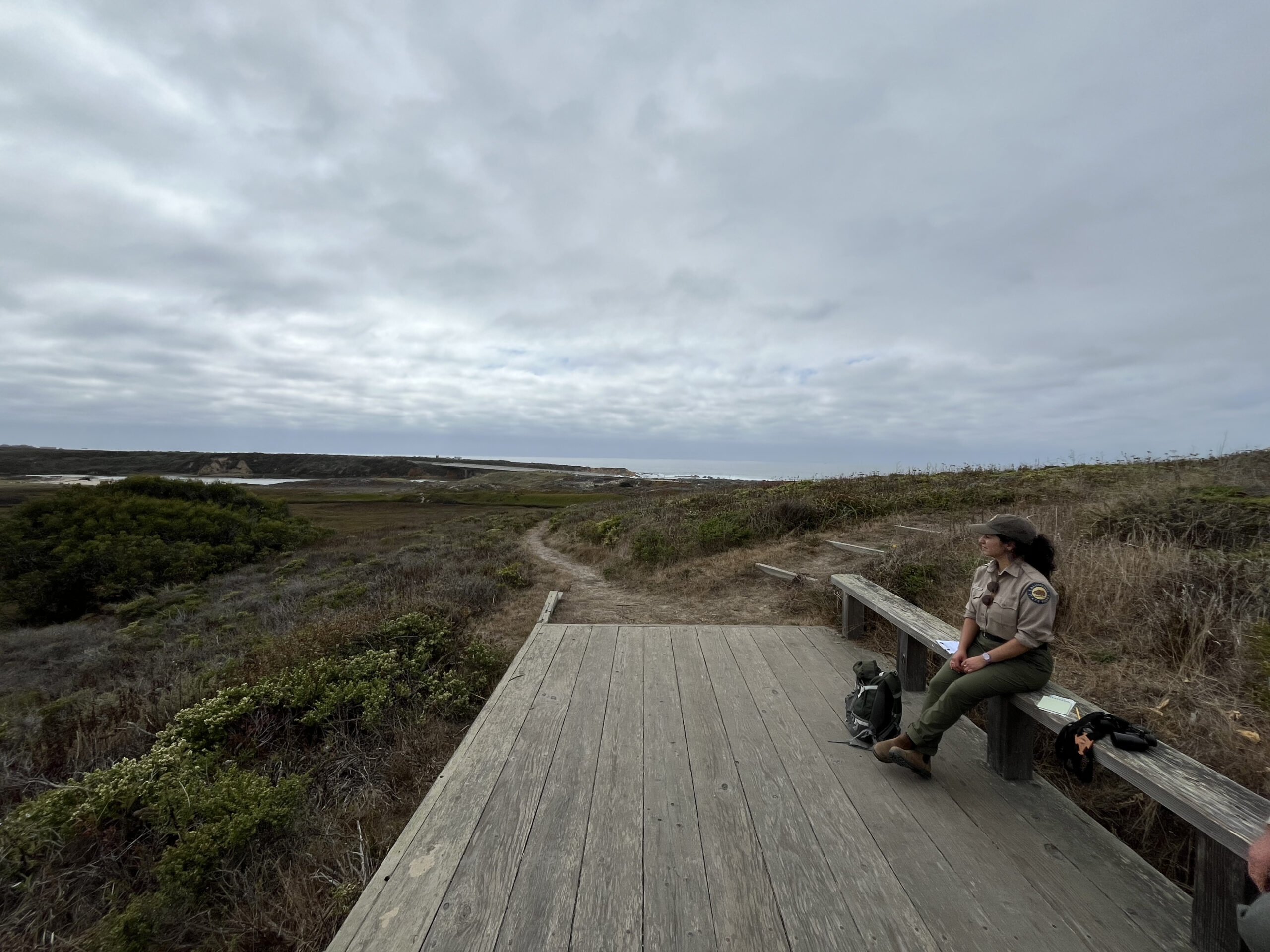
On a site visit, I met with both Ryan Diller, Environmental Scientist, and Elexis Padrón, State Park Interpreter I, to walk the marsh trails and learn about the project. Ryan is full of knowledge about Pescadero marsh. As we walked, he enthusiastically explained in environmental scientist terms what the project is about, to restore the “processes acting on the marsh complex” through “strategic naturalization of the topography.” Also noted was the work that Chris Pereira, Roads and Trails Manager for Santa Cruz District, and his crew would do to improve the trail prior to the installation of the interpretive panels. Elexis and I took copious notes of the whole experience capturing this informative site visit. Along the trail, the collaborative conversation and rich flow of ideas provided many potential interpretive nuggets for us to shine up later.
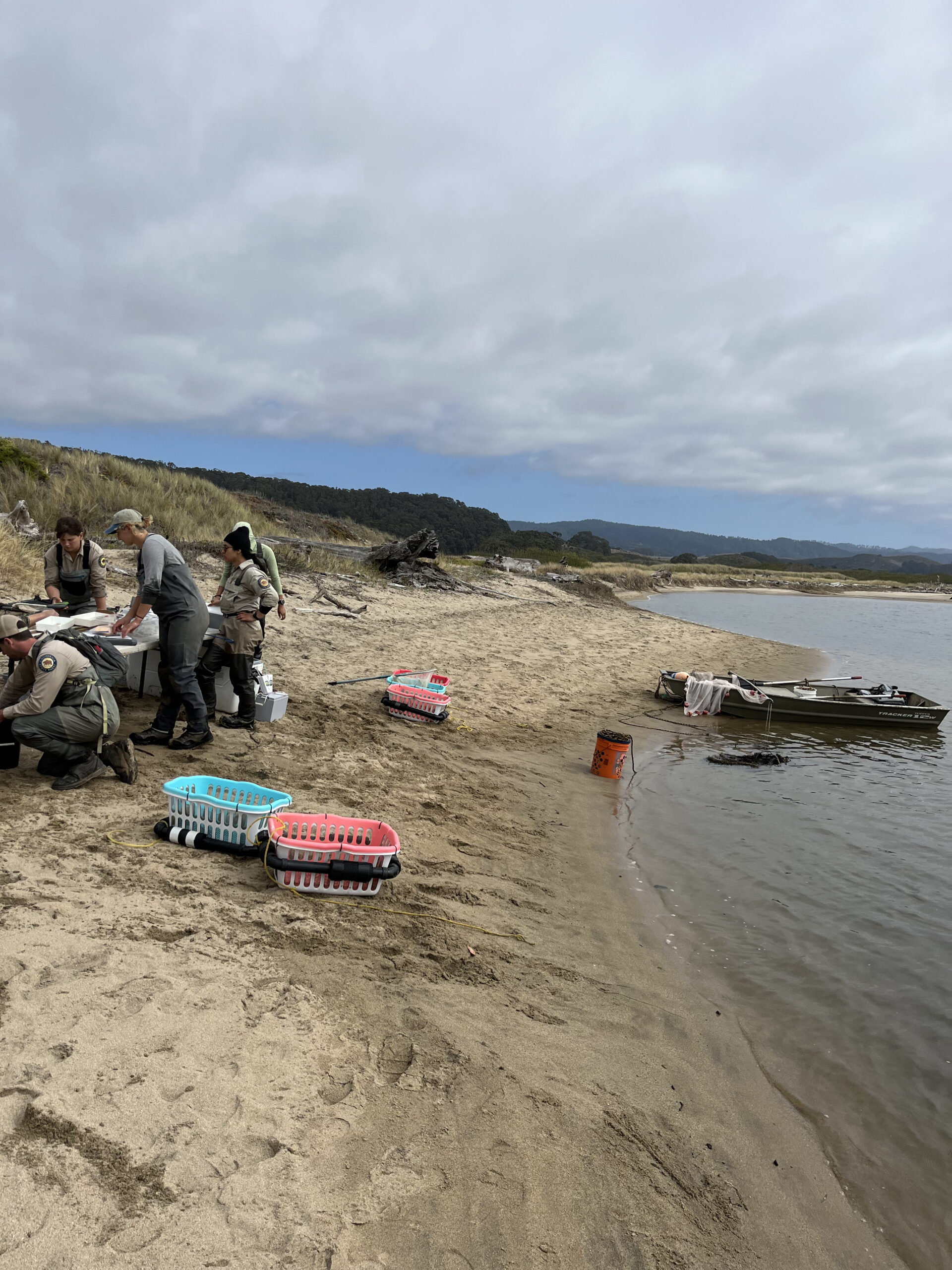
Circling back to the estuary where Pescadero and Butano Creeks meet, we saw a crew of environmental science interns with numerous steelhead fry being “location-“or GPS-tagged. The large quantity and healthy size of these juvenile fish testified to the relative health of the watershed as a whole, with the estuary serving as a barometer. We learned that steelhead numbers have fluctuated over the years but have remained somewhat constant. Its cousin, the Coho salmon, disappeared for a while but have reappeared in super low numbers in recent years. It is the hope that this project will facilitate their reappearance and bring populations up for all species in the watershed.
It was agreed that the steelhead is an inspiring species that represents the watershed and the one we want to tap into for this interpretive experience. After the site visit, Elexis, Leslie Reyes, State Park Interpreter I, and I discussed in more detail this project’s goals, objectives, and general timeline. We also began developing the interpretive theme, sub-themes, and storyline. Leslie reached out to Mike Grone, district archaeologist, who has already provided us with some great “deep time” perspective of the steelhead as well as serving as our liaison between local Tribe members. All this is exciting, and we’ve only just begun!
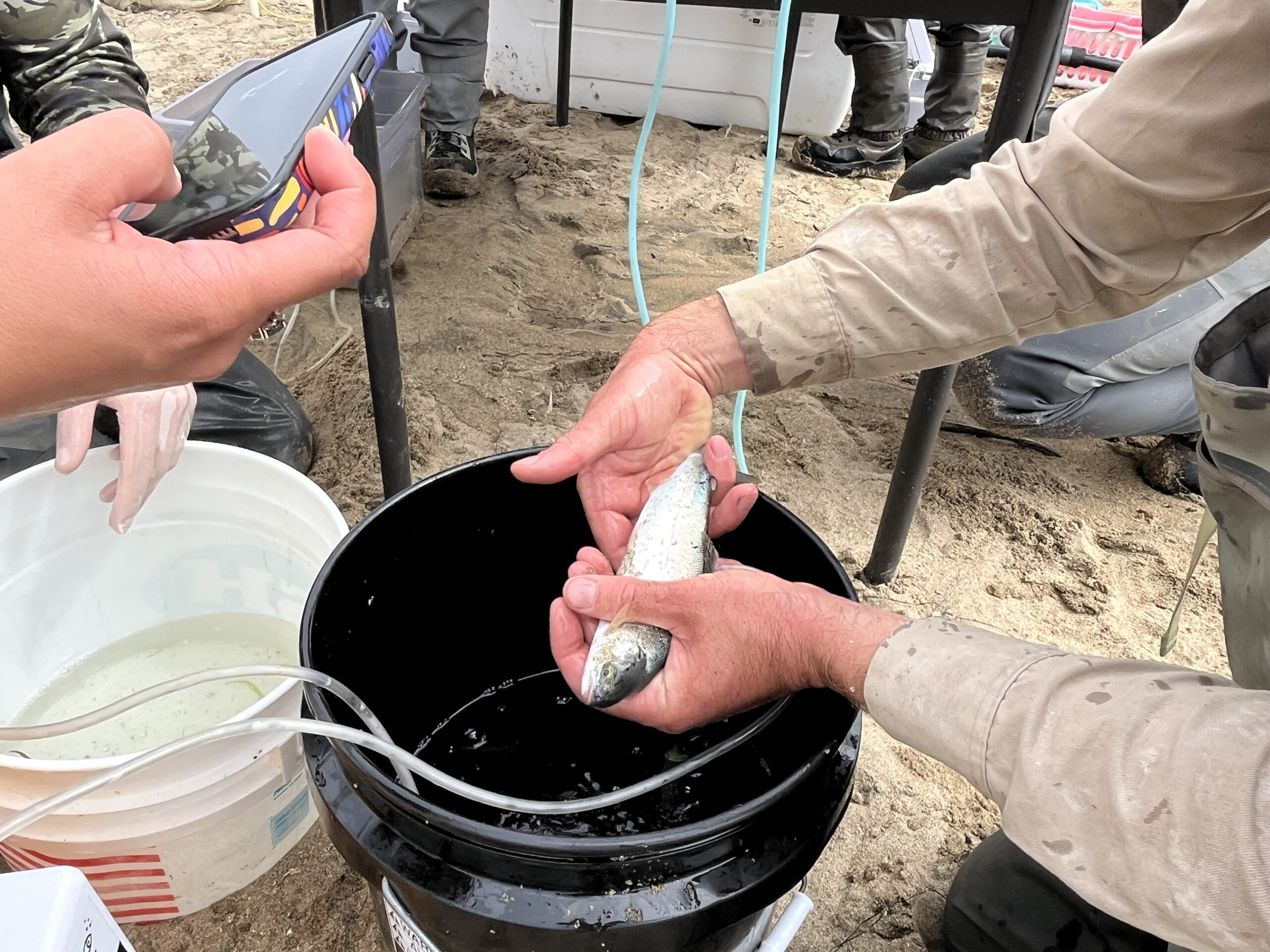
The genuine collaborative ethos can be summed up by “many hands make light work” and “team work makes the dream work” quotes. On a macro level, it fulfills our Department’s mission while upholding the voice of California voters and giving voice to the voiceless. On a more focused level, it provides a rich opportunity to collaborate with our colleagues within our discipline and to reach across program areas to create for our park visitors something relevant, inclusive, and worthy. This gives us a chance to really connect and learn from each other, to learn from the environments we protect and interpret, and to understand and appreciate the experience and perspective our colleagues bring to any collaboration and our Department as a whole.
—Daniel Williford, Cannabis Watershed Protection Program
